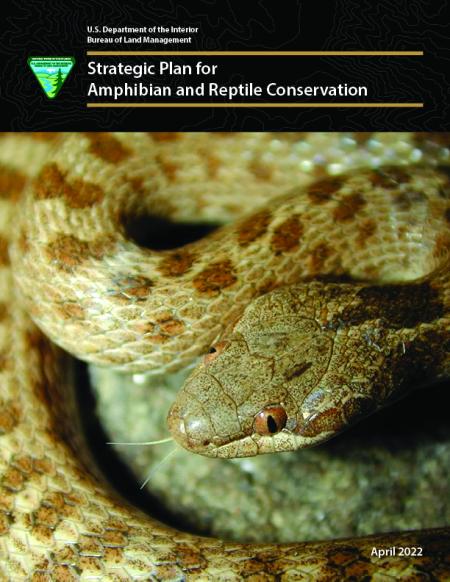Strategic Plan for Amphibian and Reptile Conservation

The Bureau of Land Management (BLM) is responsible for managing approximately 245 million acres of public lands mostly in the Western United States and approximately 710 million acres of subsurface mineral estate nationwide. In accordance with the Federal Land Policy and Management Act (FLPMA) of 1976, the BLM manages public lands under the principles of multiple use and sustained yield. FLPMA requires that “the public lands be managed in a manner that will…provide food and habitat for fish and wildlife…” (Section 102(a)(8)). FLPMA also includes “fish and wildlife development and utilization” as one of the six “principal or major uses” of the public lands (Section 103(l)). BLM policy implements these provisions of law by, for example, directing the BLM “to manage habitat with emphasis on ecosystems to ensure selfsustaining populations and a natural abundance and diversity of wildlife, fish, and plant resources on the public lands” (BLM Manual 6500, “Wildlife and Fisheries Management”).
This legal and policy framework applies to more than 100 BLM special status amphibian and reptile (herpetofauna) species, including herpetofauna species listed under the Endangered Species Act (ESA) of 1973, that occur on BLM-managed lands. The BLM requires a strategic commitment of resources to implement management, conservation, and protection activities for these species and their habitats. By proactively and collaboratively contributing to the management and sustainability of herpetofauna and their habitats, the BLM will enhance recovery of ESAlisted species, preclude the need for listing under the ESA, and develop and maintain partnerships, while promoting biodiversity and ecologically resilient landscapes.
The purpose of this strategy is to promote herpetofauna within the BLM; guide the state, district, and field offices in the efficient and effective management of habitats; and support the recovery of herpetofauna populations where they have declined on public lands. The strategy outlines five overarching goals:
1. Inventory BLM herpetofauna resources and identify needs.
2. Identify and address threats to BLM herpetofauna habitats and populations.
3. Increase the BLM’s role in herpetofauna communication and collaboration.
4. Improve BLM business practices, policies, and planning with respect to herpetofauna management and conservation.
5. Increase science support tools and information for herpetofauna species and habitat management.
The BLM’s objectives to achieve these goals are focused on management actions, best management practices, partnerships, collaborations, and increasing awareness of herpetofauna resources on BLM-managed lands.
